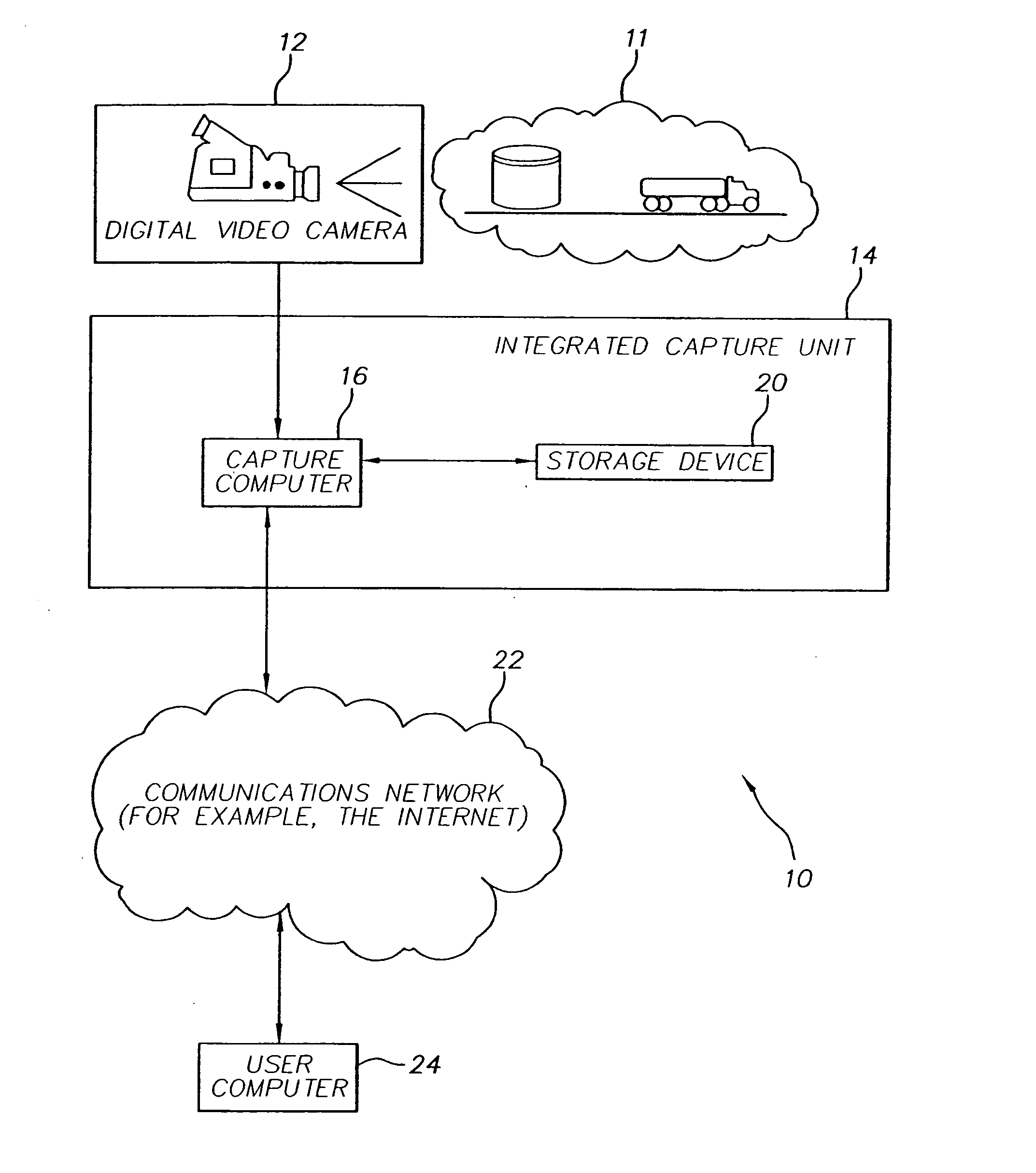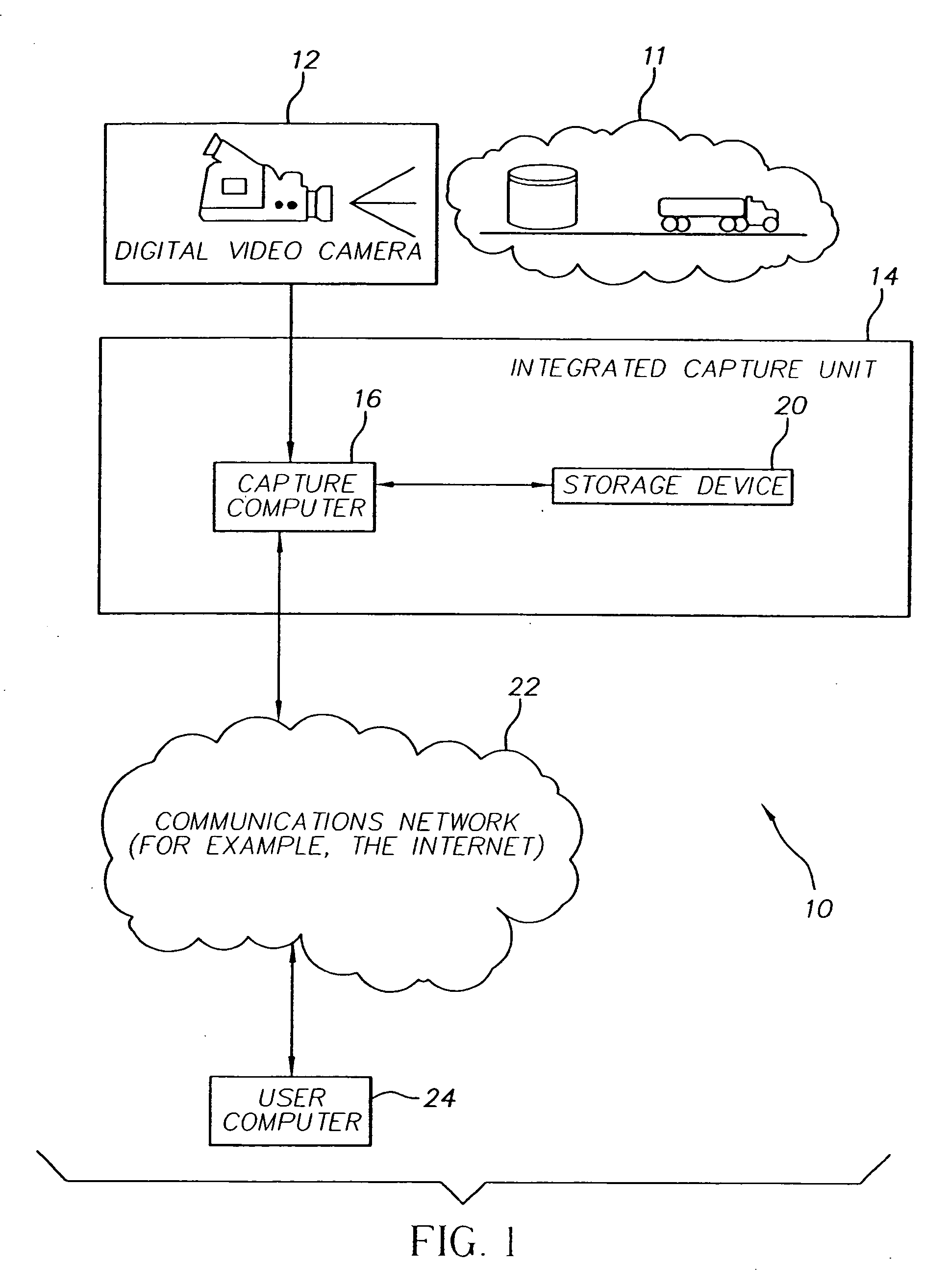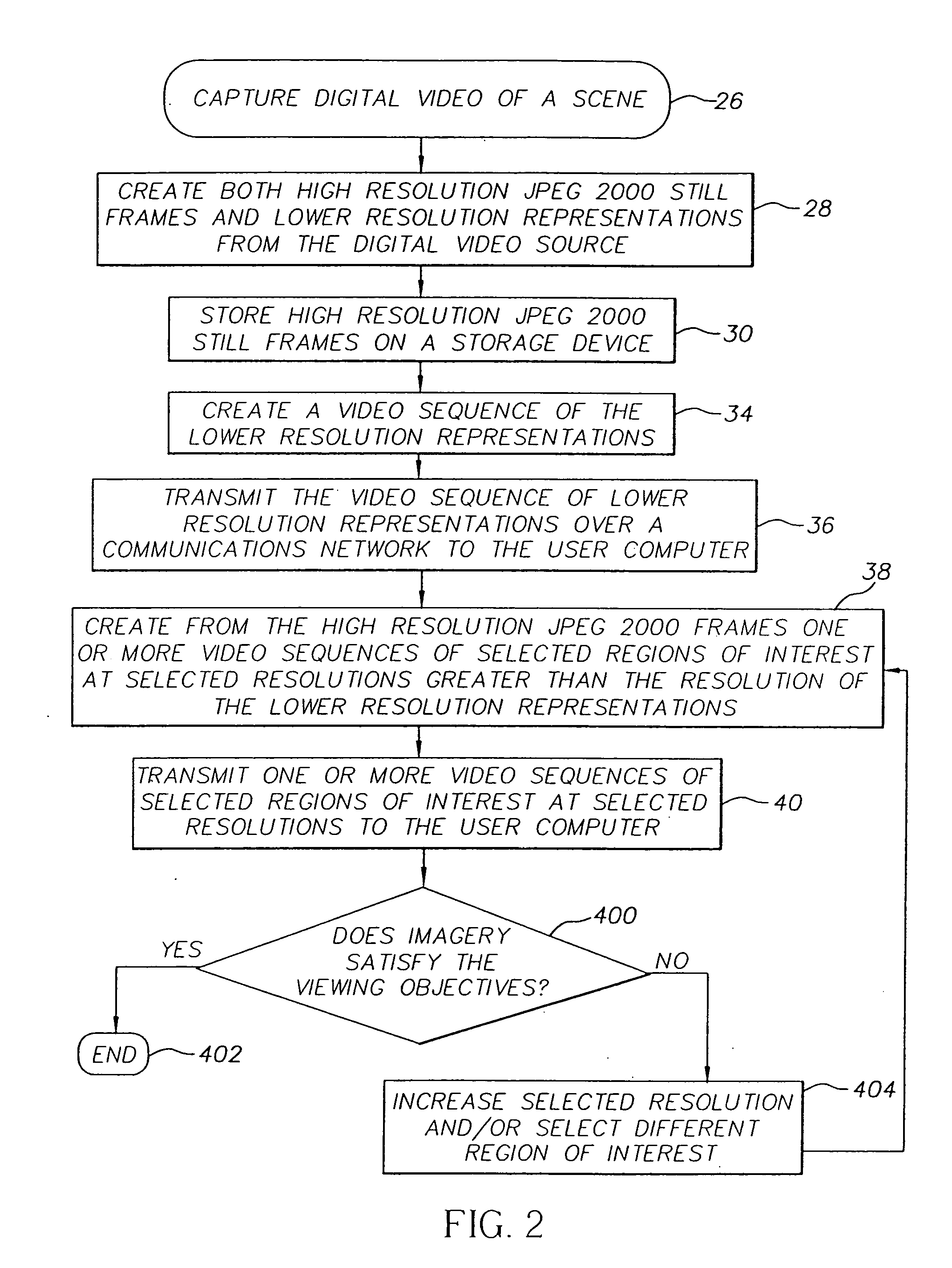Method of transmitting selected regions of interest of digital video data at selected resolutions
a digital video and region technology, applied in the field of digital image exploitation and transmission, can solve the problems of increasing the volume of information required to digitally represent a true to life image, increasing the difficulty of transmission of images between devices, and increasing the difficulty of manipulating such images on digital devices such as computers
- Summary
- Abstract
- Description
- Claims
- Application Information
AI Technical Summary
Benefits of technology
Problems solved by technology
Method used
Image
Examples
Embodiment Construction
[0030]FIG. 1 is a system diagram in accordance with the present invention. A selective digital video transmission system 10 is shown that includes a digital video camera 12, an example of which is the KODAK™ ES 1.0 Megapixel camera™. The digital video camera 12 captures digital video of a captured scene 11 and outputs that digital video to a capture computer 16. Digital video camera 12 communicates with capture computer 16 via a direct connection, using standard techniques as found in the art. Direct connections include, but are not limited to, Universal Serial Bus (USB)™, Firewire™, or other well known standard, serial, or parallel interfaces, whether connected with a cable or with a wireless interface, such as a Bluetooth™ connection. Capture computer 16 compresses the digital video and stores it on storage device 20, which is connected to capture computer 16 via any of the conventional and widely known high-speed connections. Storage device 20 can be a variety of devices well kno...
PUM
 Login to View More
Login to View More Abstract
Description
Claims
Application Information
 Login to View More
Login to View More - R&D
- Intellectual Property
- Life Sciences
- Materials
- Tech Scout
- Unparalleled Data Quality
- Higher Quality Content
- 60% Fewer Hallucinations
Browse by: Latest US Patents, China's latest patents, Technical Efficacy Thesaurus, Application Domain, Technology Topic, Popular Technical Reports.
© 2025 PatSnap. All rights reserved.Legal|Privacy policy|Modern Slavery Act Transparency Statement|Sitemap|About US| Contact US: help@patsnap.com



